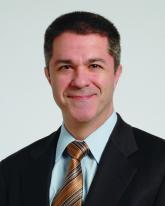Opinion

Resignation
- Author:
- Matt Kalaycio, MD
Ambition is overrated. The ambitious find it harder to accept failure, and some degree of failure is likely.
Opinion

Treat or treat
- Author:
- Matt Kalaycio, MD
When assessing whether to recommend treatment, it’s tough to know the difference between tricks and treats.
Opinion

Reunion
- Author:
- Matt Kalaycio, MD
Here we were, three accomplished physicians all resigning from powerful posts at the same time for what turns out to be similar reasons. Our...
Opinion

Timed perfectly
- Author:
- Matt Kalaycio, MD
His leukemia was asymptomatic, indolent, and required no treatment. He could have waited 6 months to be seen. But, no; he couldn’t.
Opinion

Rat race
- Author:
- Matt Kalaycio, MD
A rat race can be more than just a competitive quest for financial gain. In politics, the quest is more for power. In sports, the quest includes...
Article

Monoclonal gammopathy of undetermined significance: A primary care guide
- Author:
- Jack Khouri, MD
- Christy Samaras, DO
- Jason Valent, MD
- Alexa Mejia Garcia, MD
- Beth Faiman, PhD, CNP
- Saveta Mathur, CNP
- Kim Hamilton, CNP
- Megan Nakashima, MD
- Matt Kalaycio, MD
Low-risk MGUS may not require subspecialty referral and can be followed by the outpatient provider.
Opinion

The white wall
- Author:
- Matt Kalaycio, MD
How many clinically shaky fellows do we graduate into our profession every year? How many of us are aware of colleagues who are unskilled, but are...
Opinion

Pathologic superstition
- Author:
- Matt Kalaycio, MD
Without certainty, how can a physician debunk a superstition?
Opinion

Full disclosure
- Author:
- Matt Kalaycio, MD
Dr. Matt Kalaycio thought he was free of financial conflicts because he doesn’t take pharma money. Then he checked Open Payments.
Opinion

Seeking the chair
- Author:
- Matt Kalaycio, MD
Dr. Matt Kalaycio decodes the qualities it takes to be a department chairperson.
Opinion

The enemy of good
- Author:
- Matt Kalaycio, MD
By setting narrow limits on study eligibility, we risk treatment rationing through regulatory restriction.
Opinion

Leadership hacks: structural tension
- Author:
- Matt Kalaycio, MD
The structural tension model can be a useful framework for addressing faculty team challenges.
Opinion

How would you treat ... recurrent pre-B ALL in a 24-year-old woman?
- Author:
- Matt Kalaycio, MD
Which treatment would you recommend? Make your selection and tell us why you chose it.
Opinion

Successful teams
- Author:
- Matt Kalaycio, MD
The teams that function most successfully are those that create a culture of trust and helpfulness no matter the individual talents of those on...
Opinion

Defining high reliability
- Author:
- Matt Kalaycio, MD
What are the best ways for us to become high-reliability individuals?
